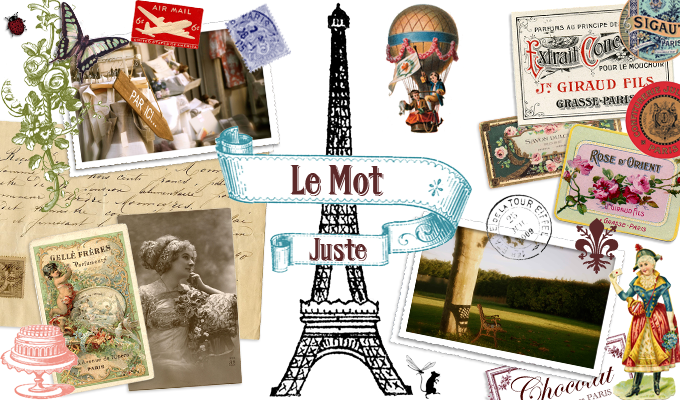We have now covered two thirds of the holy gastronomical trinity. With bread and cheese accounted for, let us now turn our attention to the oh-so-pleasant final installment: wine.
Where to begin? French wine, how do I love thee! Nor am I alone in my fondness; these two have been working their charms on mankind for millennia (which is not to say that I’m unoriginal). Both have played pivotal roles in my life thus far: France by drawing me abroad, wine by taking over once I got here. I spent over three years working in the French wine industry and even found inspiration for my Master’s thesis therein. And while I am today a recovering former wine marketer, wine itself continues to be a personal interest. Heck, I’m a Californian living in Paris—loving wine comes with the territory.
Prior to finding gainful employment in the sector, French wine revealed itself to me purely by chance. As in, I would be invited to a dinner party, garden party, house party, birthday party, anniversary party, wedding party or any party in between and lo and behold! Opportunities to get up close and personal with French wine would abound. But as random sampling can only get one so far, I began a more intellectual pursuit of the charms of the vine and took to reading books on wine, touring vineyards, lingering in the wine aisle of my local supermarket, and even frequenting specialty wine shops just for the thrill of it. As such, I managed to acquire a fair degree of knowledge about French wine. And while I certainly cannot qualify myself as a true expert, I can on occasion manage to make myself sound enough like one to fool most people, which is kind of neat.
But enough about me; let’s talk vin.
France may have recently conceded its place as the world’s leading wine producer to Italy, but its vineyards still yield some 45 million hectoliters of wine per annum. This sea of crushed grapes represents over 400 appellations d’origine contrôlée (certification granted to wines produced in strict observance of predefined geographical and qualitative regulations), 150 vins de pays (one step down from the AOC crowd in terms of quality, theoretically in any case) and innumerable vins de table (unassuming table wine). And yet, despite this plethoric range of wines, with surely something to please taste buds from all walks of life, many are those who have fallen out of love with French wine or, worse, have never fallen in love with it to begin with. Perceived as overly complicated, over-priced or just plain snooty, French wine today suffers from a serious image problem. As someone who loves both France and its wine, I feel a sort of moral, vaguely self-righteous obligation to refute these misconceptions. Except, um, they’re not entirely false.
Overly complicated
With its thousands of wines, hundreds of appellations, countless domaines and largely archaic labels, it’s fairly accurate to say that French wine tends toward the complicated. Most French wine labels feature information that the uninitiated are highly unlikely to understand. Where are the varietals indicated? How exactly is one expected to pronounce the wine’s name? What’s a fût de chêne? The approach isn’t terribly friendly, the labels aren’t terribly attractive and the marketing effort is virtually nonexistent. That said, information in this day and age is easier and faster to come by than ever before. All it takes is a bit of curiosity combined with a bit of research and voilà, French labels become much less intimidating. Can’t tell the difference between a Bourgogne and a Côtes-du-Rhône? Pick up a book on French wine, or at least a quick guide, or at the very, very minimum, Google it! Be proactive in your wine purchasing. No need to blame the French and their “unfriendly” labels/classifications/difficult-to-articulate names. Italian producers don’t make the job any easier, by the way. Nor do the Spanish, but for some reason no one ever complains about them.
Over-priced
This one is all a matter of where you live and where you shop. I live and shop in Paris, which means that I can buy all manner of seriously inexpensive French wine with incredible ease. My parents, on the other hand, live in California, which means that they can only get moderately to officially expensive French wine, and with much greater difficulty than I. However, in all fairness, they can also procure themselves all the delicious Napa wines they want, when they want, whereas I have to make a pilgrimage to a specialty wine store and hunt around for the one lonely Californian reference they have—which to add insult to injury is often a Gallo. Sigh. Have I mentioned that less than 3% of France’s wine imports are American?
But let’s get back to pricing. Within French borders I’ve seen everything from wine sold in plastic jugs at €1.66 per liter to a 1961 Côtes-du-Rhône Hermitage magnum sold at a mind-blowing €40,000. Between us, I’d say that unless said magnum grants everlasting life, that cash could definitely be better spent elsewhere. In any case, there may be no French wine available in the States for the same price as, say, a bottle of Two-Buck Chuck, but let us not compare the incomparable.
Snooty in general
Actually I think the problem here is really just residual snootiness from centuries of justifiable French superiority in this domain. France once used to be the be all and end all of fine wine, a position it smugly enjoyed (as would you). Wine aficionados embraced France’s thousands of wines and fantastically complicated system of distinguishing them, while those who didn’t hold a Ph.D in oenology were intimidated by the perplexing variety and societal pressure to understand the predominantly French selection filling every restaurant’s fine wine list.
Then, along came New World wines, whose taste, variety and friendly labels changed everything. Delicious wines from such diverse lands as Chile, New Zealand, South Africa, Australia, and the United States literally poured into the market and met with roaring success, while France, Italy, Spain and other Old World countries suddenly found themselves reeling from the one-two punch of New World competition AND steadily decreasing consumption on the home front. To make matters worse, most European producers had been resting on their proverbial laurels for decades—nay, centuries—without ever having made the effort to render their wines attractive to modern consumers. Thus, the savvy sales approach of New World wines was able to out-maneuver European wines with surprising ease, leaving France and its fellow producer countries laden with excess bottles that no one seemed to want to buy anymore.
This, in essence, is the origin of the “French wine crisis,” a problem that I spent years working on while employed by a Paris-based wine company whose goal was to apply New World marketing techniques to French wine in order to sell more of it. It sounded like a good idea at the time. I would happily relate in minute detail the twists and turns of that little adventure into the surreal, but I don’t want to be sued for libel. Not immediately, anyway; I figure it will be much more fun to be sued later on, once I’ve written an entire book about it (I’ll keep you posted).
So are French wines still snooty? In large part, yes. But to their credit, this is much less the case today than it was even five years ago. Many French vintners have adopted sales and marketing techniques (oh misery! Oh damnation!) that have done a great deal for consumer comprehension among mid-range wines. As for la crème de la crème (not a real French expression, by the way), France’s finest will never need an ounce of marketing because its audience was born knowing the significance of Chassagne-Montrachet 1er Cru. And if we’re being honest, how consumer friendly should French wine really become? Would it still be French if it didn’t have at least a soupçon of snootiness to it? Moreover, isn’t that part of the fun? Doesn’t the wine drinking world have enough happy-go-lucky labels jockeying for attention on supermarket shelves the world over without the French having to jump aboard the bandwagon of flashy colors and animal emblems? Maybe those monochromatic Gallic labels and complicated names are exactly what they should be; maybe it’s up to the informed consumer to take enough interest in what he or she is drinking to go to the minimal effort of learning a few French wine basics. N’est-ce pas?
In closing, French wine is indeed surrounded by a great many preconceived notions. My advice is to set them aside and to go forth and taste, for only by tasting its unfathomable diversity can one get any idea of the myriad delights that France’s vineyards truly have to offer.
And now that I’m done singing the praises of French wine, I’ll let you in on a little secret: in matters of pure taste, my Californian palate remains steadfast and loyal to its homeland. In other words, I think the Judgment of Paris was pretty right on the money. There, I said it (duck, cringe). Now, taste by definition is totally and completely subjective, but this is my blog and I’m allowed to be as subjective as I like! I may deeply love France and its wines, and will continue to advocate their appreciation and enlightened consumption, but my wine drinker’s heart still belongs to Napa Valley. What can I say? The heart has its raisins, and the raisins know nothing about it.







